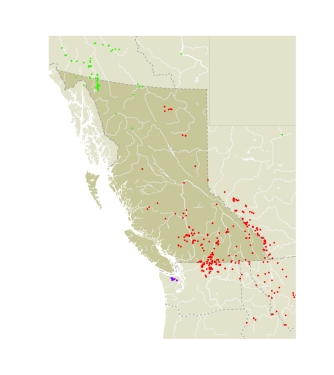The name Oeneis refers to Oeneus, king of the ancient city of Calydon in western Greece, husband of Althaea and father of Meleagr and Tydeus. The name of the European genus Melanargia is derived from Meleagr, and another species of Satyrinae was derived from Tydeus. The common name "arctics" was first used by Holland (1898) in reference to the arctic and alpine distribution of many species.
Arctics are medium-sized brown or grey butterflies. They usually have eyespots on the wings. They fly rapidly and erratically over short distances, and then drop suddenly to the ground or onto a tree trunk. Arctics all have a two-year life cycle, with the young larvae hibernating the first winter and the almost mature larvae hibernating the second winter. The two-year life cycle results in many species having adults in flight only every second year, with butterflies in alternate years being greatly reduced in abundance or missing entirely in some or all areas.
Eggs are white or off-white in colour, and are conical in shape, with vertical ribs down the side. First instar larvae are thinly covered with hairs, and are tan or greenish. Mature larvae are slender and are tan or greenish with longitudinal stripes of various colours down the back and sides. They are thinly covered with hairs that are frequently reddish in colour. Pupae are roughly cylindrical and rounded, and have brown,yellow brown, and olive markings. Descriptions of the immature stages are all from outside BC, with the exception of the Great Arctic.
Larval foodplants are usually grasses and sedges. One species, the Jutta Arctic, also feeds on rushes. Eggs are laid singly on leaves of the foodplant, or nearby on dead leaves or debris. The foodplants naturally utilized in BC are not known for any species; the little information that is available is from Manitoba, Alberta, or the American Rocky Mountains.
Arctics fall into three basic ecological groups (Masters 1969): forest-dwelling species (macounii, nevadensis, jutta); prairie and steppe species (uhleri, chryxus, alberta); and arctic taiga-tundra/alpine summit species (bore, melissa, polixenes). Oeneis bore and polixenes can sometimes be difficult to identify by wing pattern alone, but the valves of the male genitalia are distinctly different. Oeneis rosovi is also difficult to distinguish from O. polixenes, but there are no genitalic differences between the two species.
|
